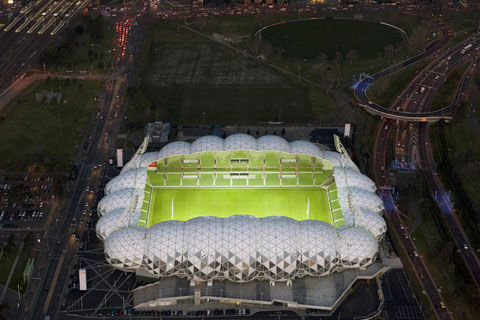Entrant: Taiyo Membrane Corp
Client: Taiyo Birdair Asia PTE LTD
Architect: Taiyo Membrane Corp
Structural Engineer: Robert McDonald (TMC)
Fabricator(s): Taiyo Membrane Corp
This project was entered in the LSAA 2007 Design Awards (Cat 2, 2002) Medium Fabric Structures
Application:
The project was designed to enhance the area around the mosque where believers come to pray. It allowed for a unique and innovative design for the Mosque and its congregation. Installed in Taman Rasuna, Jakarta, this outdoor area has been enhanced through the structures without it defaming the mosque and its ambient presence.
Design Brief
The design brief was to produce a structure sympathetic to the architecture of the mosque precinct.
The structure was to produce protection from the elements (rain & sun) so impermeable PVC membrane was selected.
Structural System
The structural system consist of modular units of column, rafter and strut all interconnected and PVC membrane.
The cantilevered columns predominantly resist the out of balance actions due to wind/rain etc and also serve as drainage for the structure. Wind loading of 35m/s (permissible) allowed for economical design of hardware. Foundation design was handled by local builders who are familiar with local ground condition and based other design on TMC issued reactions.
Whilst the environmental protection factor important, the predominant driving factor for the choice of inverted conics was the architectural need to fit in with the mosque. The high perimeter, low pull down points at the columns mirror the main architectural forms of the adjacent mosque.
Materials
The steel was sourced locally in Indonesia and the column was galvanized due to it doubling as the drainage for the structure.
The membrane was Ferrari 702T2 impermeable PVC with some light transmission to keep the space “open” in appearance. Cable and hardware were sourced from Australia.
Due to the high pollution in the air the T2 finish was chosen to maintain and high quality appearance for as long as possible.






